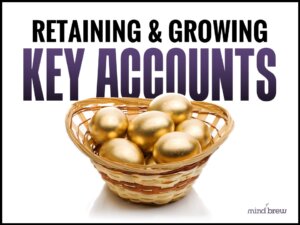In one of our SellingBrew webinars, “Beyond Reporting with Sales & Pipeline Analysis,” we explore how companies have been able to shift their mindsets beyond reporting and take steps to improve the performance of their sales operation at-scale.
As we were highlighting the importance of measuring and reducing sales cycle length or improving deal velocity, long-time subscriber David asked a great question:
How does cycle time affect overall results? Aren’t the dollars the same no matter when you get them?
Most companies intuitively recognize that shorter sales cycles are better. But they very often have a somewhat limited understanding as to why shorter cycles are better. And as a result, they tend to underestimate the impacts on results and fail to give deal velocity improvements the attention they really deserve.
Here are three ways that shorter sales cycles can impact overall performance:
- Time Value of Money. This is the most easily recognized benefit of faster sales cycles. Simply put, $50K next week is worth more than the same $50K six months from now. You can put that money to work in your business that much sooner, or you can just put it in the bank and earn a bit more interest.
- Competitive Pressure. The faster you’re able to take a deal off the street, the less competitive pressure you’re likely to encounter along the way. Given enough time, buyers will engage with a much broader range of competitive providers and accumulate a lot more ammo to use in negotiations with you. In other words, a $50K deal this week could become a $40K deal six months from now.
- Greater Productivity. The biggest impact of cycle times on performance is also the least understood. While we’d all like to think that our salespeople can keep dozens of deals simmering on the back burner, the reality is that they can really only work a handful of deals at a time. So, the faster those deals come to fruition, the faster the salespeople can get on to the next deals. By improving cycle times, you’re essentially increasing your team’s capacity to work and close more deals in a given period.
Of course, you already know that cycle time is important. And, you already know that increasing deal velocity is worthwhile. But to prioritize your improvement efforts, you must also understand the magnitude of the potential performance impacts.











